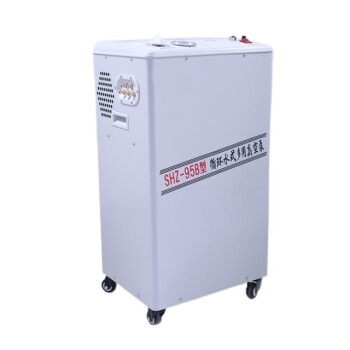Suction pumps and vacuum pumps are both used to move fluids or gases, but they operate on different principles and are suited for different applications. A suction pump primarily creates a partial vacuum to draw liquid or gas into a chamber, often used in applications like pumping water from wells or draining liquids. In contrast, a vacuum pump is designed to remove gas molecules from a sealed volume to create a high or ultra-high vacuum, commonly used in scientific, industrial, and laboratory settings. The key differences lie in their operating mechanisms, pressure ranges, and specific use cases. While suction pumps are ideal for moving liquids, vacuum pumps excel in creating and maintaining vacuums for processes like filtration, degassing, or freeze-drying.
Key Points Explained:

-
Operating Principle:
- Suction Pump: Relies on creating a partial vacuum to draw fluid into a chamber. It typically uses mechanisms like pistons, diaphragms, or impellers to generate suction.
- Vacuum Pump: Removes gas molecules from a sealed volume to create a vacuum. It operates by compressing or displacing gas, often using rotary vane, diaphragm, or turbomolecular mechanisms.
-
Pressure Range:
- Suction Pump: Operates at relatively low vacuum levels, sufficient for lifting or moving liquids. The pressure difference is moderate, making it suitable for applications like water pumping or drainage.
- Vacuum Pump: Capable of achieving much higher vacuum levels, ranging from low to ultra-high vacuum. This makes it ideal for applications requiring precise control of gas pressure, such as in a laboratory vacuum pump.
-
Applications:
- Suction Pump: Commonly used in domestic, agricultural, and industrial settings for tasks like water extraction, irrigation, or fuel transfer.
- Vacuum Pump: Widely used in scientific research, manufacturing, and medical fields. Examples include vacuum filtration, freeze-drying, and creating controlled environments in laboratories.
-
Design and Components:
- Suction Pump: Designed with a focus on moving liquids efficiently. Components like check valves and seals are optimized for liquid handling.
- Vacuum Pump: Built to handle gases and achieve specific vacuum levels. It often includes features like oil lubrication (in rotary vane pumps) or dry operation (in diaphragm pumps) to maintain performance.
-
Performance and Efficiency:
- Suction Pump: Efficient for liquid transfer but limited in its ability to create high vacuums. Its performance is often measured in terms of flow rate and suction lift.
- Vacuum Pump: Optimized for creating and maintaining vacuums, with performance metrics like ultimate vacuum pressure and pumping speed being critical.
-
Maintenance and Durability:
- Suction Pump: Generally requires less maintenance due to simpler designs and lower operating pressures.
- Vacuum Pump: May need more frequent maintenance, especially oil-lubricated models, to ensure consistent performance and longevity.
In summary, while both pumps involve creating a vacuum, their design, functionality, and applications differ significantly. Suction pumps are best for liquid transfer, while vacuum pumps are essential for creating controlled vacuum environments in scientific and industrial processes. Understanding these differences helps in selecting the right pump for specific needs, whether it’s for water extraction or advanced laboratory applications.
Summary Table:
| Aspect | Suction Pump | Vacuum Pump |
|---|---|---|
| Operating Principle | Creates a partial vacuum to draw fluid into a chamber. | Removes gas molecules to create a high or ultra-high vacuum. |
| Pressure Range | Operates at low vacuum levels, suitable for liquid transfer. | Achieves high to ultra-high vacuum levels for precise gas control. |
| Applications | Water extraction, irrigation, fuel transfer. | Vacuum filtration, freeze-drying, laboratory environments. |
| Design | Optimized for liquid handling with components like check valves and seals. | Built for gas handling, often with oil lubrication or dry operation features. |
| Performance | Measures flow rate and suction lift. | Evaluates ultimate vacuum pressure and pumping speed. |
| Maintenance | Requires less maintenance due to simpler designs. | May need frequent maintenance, especially in oil-lubricated models. |
Need help choosing the right pump for your application? Contact our experts today!








